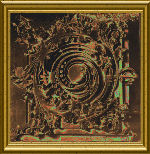 |
firm active: 1907-1921 minneapolis, minnesota :: chicago, illinois |
Notes on Site Content

Why manuscripts are sometimes converted to HTML and sometimes presented as PDF files
A primary purpose of this site is to create an interconnected set of references to original manuscript documents so that people can have direct impressions of source materials, secure their own insights, and make their own interpretations. Two ways exist to do this: convert documents to HTML or present them as image-based PDF files. Because many of Purcell's typewritten manuscripts were keyed in the 1980s as I worked with the original documents, there was a natural impetus for the creation of Hypertext Markup Language [HTML] pages when this site started in 1994. However, the evolution of the Internet as a medium prospered the creation of reliable facsimiles in the Adobe Portable Document Format [PDF]. There are pros and cons to using HTML:
- Pro: hyperlinks can be established more easily, illegible or heavily edited originals can be clarified, and the text is searchable in HTML, whereas no errors other than those native to the original document can creep into a PDF.
- Con: In-line graphics such as sketches or photographs can be poorly integrated and lose context, formatting such as typographical conventions and layout designs are often distorted or lost outright in HTML, but display resolutions necessary for full legibility may be problematic in PDFs.
On balance, conversion to HTML has more functional possibilities for the working of this site than PDFs. Therefore most manuscripts are typed (OCR is used sometimes, but has proven less efficient with many documents whose content was left in a rawer state of production).
There are additional considerations concerning proprietary interests, including physical ownership and copyright where such conditions apply. This site is offered as a purely non-commercial research vehicle, and has been maintained with the intention with which these pages were begun, as a demonstration of the digital possibilities for scholarly community via the Internet. Every effort has been made to acknowledge source and credit appropriately.